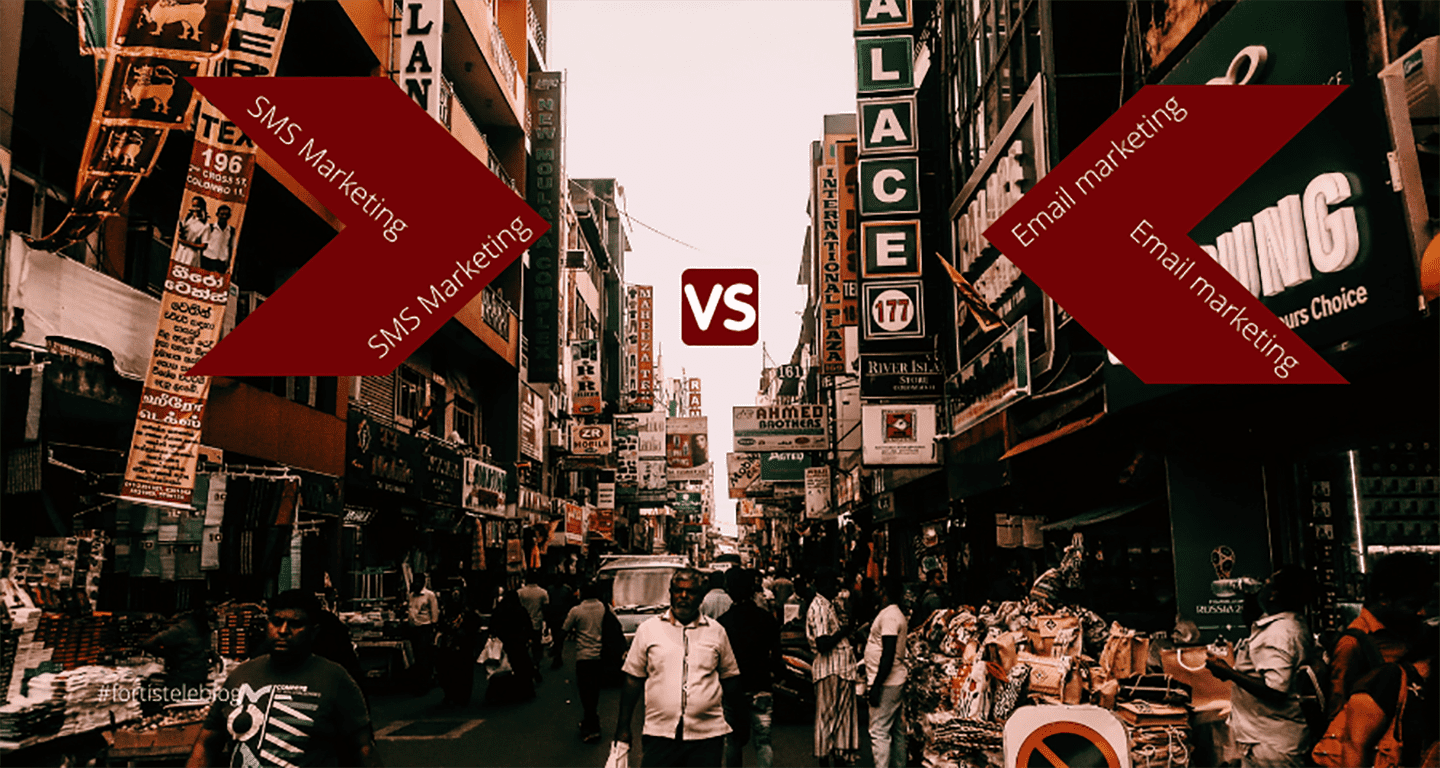Let’s explore the benefits and disadvantages of SMS marketing as well as those of email marketing. That way, you can be sure you’re getting the most bang for your buck with every campaign.
So, without further ado, let’s take a look at SMS marketing vs. email marketing to see what ROI you can expect from each.
The facts, statistics, and the future
Research shows that SMS open rates are as high as 98%, compared to just 20% of all emails. And, on average, it takes 90 seconds for someone to respond to a text and 90 minutes to respond to an email.
Furthermore, 75% of people have suggested that they’d be happy to receive an offer via SMS – this is why 65% of marketers say that SMS marketing is a “very effective” method for them.
Does this mean email is dying, then?
No way! Far from it, in fact. Yes, SMS marketing, along with other digital marketing channels, may be rising in popularity, but email isn’t going anywhere. Rather, it’s adapting to the ever-evolving online world, and it’s gaining strength because of it.
Email usage continues to grow. In 2017, there were 3.7 billion email users. By 2020, this figure is expected to rise to 4.3 billion.
The differences between SMS marketing and email marketing
Email remains a hugely popular channel for marketers, with 73% saying it’s their number one digital channel for return on investment.
In the UK alone email marketing is generating a whopping £29 billion in retail sales per year. However, that’s not to say email marketing doesn’t come without its challenges.
The challenges of email marketing
With 269 billion emails being sent per day, and nearly 50% of these being spam, our inboxes are becoming increasingly cluttered. And the likes of Microsoft and Google are trying to combat this problem by segregating emails in users’ inboxes, placing marketing emails in a separate tab as a user’s more “important” emails.
Due to the high number of emails people receive, it’s no wonder that so many get deleted without even being read.
Text messaging, in contrast, doesn’t face these same challenges. As we’ve already seen, the open rate of these messages is far, far higher than email.
As soon as someone receives an SMS, their phone alerts them and grabs their attention. And if the user doesn’t open the message right away, the phone will continue to remind them they have an unread text, making this a highly advantageous feature for your campaigns.
Don’t dismiss out on email marketing though
Discarding email marketing in favor of SMS marketing would be a huge mistake. Statistics indicate that, by 2019, over 90% of internet users in the US will use email at least once a month.
Plus, as SMS marketing continues to rise in popularity, so too will spam messages. 60% of SMS users already receive spam messages once a week. 28% receive one a day.
Therefore, in the not too distant future, SMS marketing could face many of the same challenges as email marketing.
What’s the answer, then? Whether you’re using SMS or email marketing, you need to be savvy in your approach.
Using SMS and email marketing to your advantage
Obviously, SMS messages are great because they’re short and get straight to the point. With a 160-character limit, organizations have to be sharp in their approach and can’t fill their SMS messages with loads of fluff and pointless information.
Short, precise copy that grabs attention is a must, plus any links to vouchers, tickets, surveys, and attachments. And as we’ve seen, according to Gartner, response rates from text messages can be as high as an astonishing 98%.
On the other hand, there are no particular restrictions when it comes to emails. They can be as long as you want or need them to be, they can contain images, GIFs, videos, and other interactive content, and your email list can be easily segmented through your email service provider.
That said, you still need to keep your emails concise and to the point – especially when the average reader only has an attention span of 8 seconds.
But get your content and imagery right and email offers you a wonderful chance to up your marketing game significantly.
Takeaway: Regardless of whether you’re using SMS or email marketing, it’s all about the quality not the quantity of your message.
There are a number of instances where SMS marketing will help maximize your ROI, including when you’re sending out:
When will you benefit from SMS and email marketing?
There are a number of instances where SMS marketing will help maximize your ROI, including when you’re sending out, in contrast of email suits a multitude of purposes, and it’s something many users are used to receiving for several reasons, including:
- SMS
- Deals and coupons
- Meaningful content that’s straight to the point
- Information to keep customers in the loop
- Personal alerts, e.g. notifications and account updates
- Quick access to important information
- Information to customers who don’t want to visit apps or websites
- In-depth and educational information
- Deals and coupons
- Service or product promotions
- Meaningful, detailed content
- Feedback, advice, or action requests
- Exclusivity
- Building, establishing, and maintaining a community
Using SMS marketing and email marketing together
Email marketing may feel like the safer bet in many instances, especially if you’ve already been using it effectively. However, combining these efforts with SMS marketing can really boost your results.
For example, Smart Insights found that by sending a follow-up text to your customers asking if they’ve read your email, it can increase open rates by as much as 30%.
By combining these two channels you can quickly and easily boost the engagement and retention levels of your customers. This is particularly beneficial if you’re using emails to gain reviews and customer viewpoints.
Consider the demographics of your customers
Don’t you need to think about the response rates you should expect from different demographics? Yes, of course. In the US, 85% of adults check their emails on a daily basis. About 81% of American adults use SMS each day.
However, SMS is far more popular among younger generations. 18- to 24-year-olds receive and send an average of 128 texts per day, compared to just 16 for those aged 55 and over. But that doesn’t mean you should dismiss email for younger recipients.
An email consumer survey conducted by Adobe revealed an obsession for emails among 18- to 34-year-olds.
Granted, this does make everything a little more complicated as there isn’t a clear-cut answer for marketing campaigns for each generation. However, what it does encourage is a little extra work to get to know your customers.
You need to find out what content your customers want, how they want to receive it, and how frequently they want to hear from you. Talk to your customers, segment your audience, go above and beyond to deliver, get their feedback, and you’ll engage your customers like never before.
Wrap up
Email is growing, evolving, and changing – and so is SMS.
This gives you the ideal opportunity to engage with your customers through both mediums. You just need to determine the right balance for your organization and industry, which means you need to test and adapt the ideal communication channel(s) for you.
This isn’t a question of SMS marketing vs. email marketing–it’s a question of what your audience is looking for and how you can deliver it. Why choose one when you can use both?





